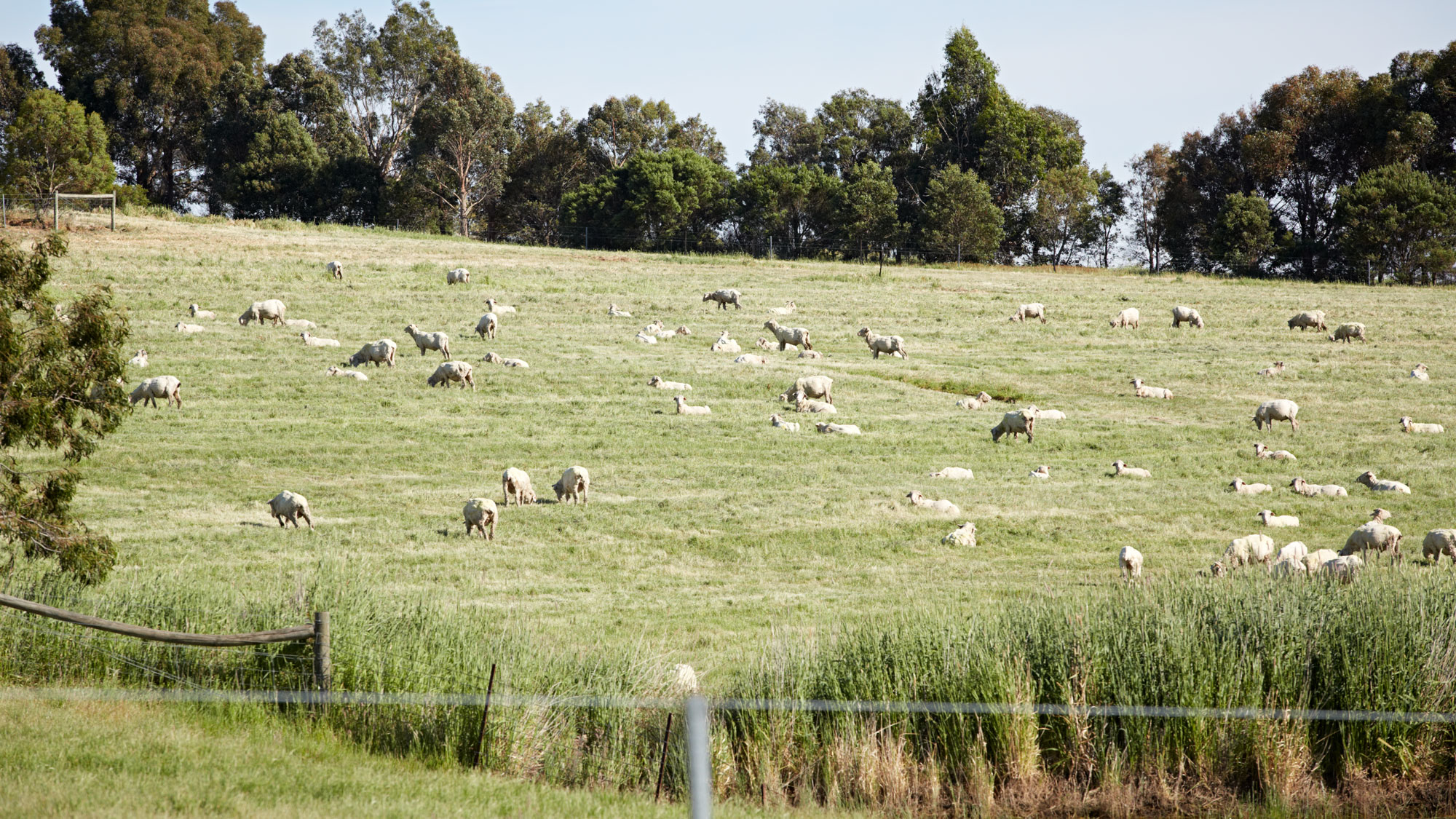Chapter 11.3 Adopt on-farm biosecurity measures
Background information
Strict biosecurity measures are required to maintain freedom from economically significant diseases and parasites. Assessing the risk of disease outbreaks and adopting appropriate strategies can reduce the chances of introducing diseases that affect productivity and profit. If a disease is introduced, action must be taken to control or eradicate it.
At a glance
- Avoiding disease introduction is the gold standard – your sheep will be healthier and more productive, and it’s more cost effective than treatment.
- Keep footrot, lice and JD out of your sheep flock.
- When disease is detected, take action to minimise its impact.
- Seek professional help in developing a biosecurity plan.
Assess the current disease status of your flock
Some important pests and diseases to be avoided include:
- Footrot;
- Lice;
- Johnes disease (JD);
- Drench resistance (discussed in chapter 11.2); and
- Brucellosis.
Be able to recognise important diseases (tool 11.13) and avoid their introduction.
Potential sources of disease
Ask for a signed National Sheep Health Declaration (which includes disease history) to assess the risk of disease when introducing new sheep into a flock. Visit Farm Biosecurity to download a copy of a National Sheep Health Declaration template.
Sheep producers must provide a signed National Vendor Declaration (NVD) for all sheep or lambs they offer for sale or slaughter and insist on a correctly completed copy when buying sheep or lambs. A signed NVD declares that the owner of the sheep has met the basic on-farm food safety requirements of the Livestock Production Assurance (LPA) program (see chapter 3.2 in MMFS Module 3 Market Focused Lamb and Sheepmeat Production).
Complete a risk assessment of your boundary fences and policy for new stock introductions, transport and people (see tool 11.4) to identify potential disease risks for your farm.
Quarantine new sheep on arrival
Purchasing stock is a normal part of management on some farms. To minimise the risk of introducing disease, observe quarantine and induction periods during which existing sheep are not exposed to new sheep (see tool 11.5). As a general rule, quarantine periods should be 21 days.
Control and eradicate existing diseases
Control and eradicate introduced diseases such as footrot and lice (see tool 11.13).
If a disease you’re not confident in controlling or eradicating has made its way onto your place, seek immediate professional advice from your veterinarian or animal health advisor.
SIGNPOSTS
WATCH
For South Australian sheep producers, advisors and livestock agents to help with diagnosis, control and management of footrot on-farm.
Reduce the risks to producers posed by diseases, pests and weeds to their crops and livestock. This website provides videos with information about on-farm biosecurity measures, which help prevent both endemic and exotic diseases, pests and weeds from entering and becoming established on farms. It encourages producers to identify risks to their livestock, crops and plant products, and to minimise those risks through good practices.
READ
Each of the state governments has information on the classification and treatment of footrot for your jurisdiction.
Each of the state governments has information on the classification and treatment of footrot for your jurisdiction.
Each of the state governments has information on the classification and treatment of footrot for your jurisdiction.
A range of resources on footrot, including identification and control guides and new research.
Reduce the risk of introducing worms and lice onto your farm, identify which animals can safely be transported and make sure you are completing your animal transfer documentation correctly.
Good biosecurity practices prevent the spread of infectious disease and invasive pests or weeds between farms as well as protecting Australia from diseases and weeds that occur overseas. Biosecurity procedures address the containment of disease outbreaks when they occur.
Each of the state governments has information on the classification and treatment of ovine Johne’s disease (OJD) for your jurisdiction.
Each of the state governments has information on the classification and treatment of ovine Johne’s disease (OJD) for your jurisdiction.
Each of the state governments has information on the classification and treatment of ovine Johne’s disease (OJD) for your jurisdiction.
Each of the state governments has information on the classification and treatment of ovine Johne’s disease (OJD) for your jurisdiction.
Each of the state governments has information on the classification and treatment of ovine Johne’s disease (OJD) for your jurisdiction.
Each of the state governments has information on the classification and treatment of ovine Johne’s disease (OJD) for your jurisdiction.
Home to everything the sheep industry needs to know about managing Johne’s disease and preventing its spread.
Communicates the food safety and treatment status of every animal every time it moves along the value chain – between properties, to saleyards, or to processors. The NVD also acts as movement documentation throughout the value chain.
USE
An integrated national program providing best practice advice for managing parasites in different environments in Australia. It is the umbrella for four flagship programs:
- WormBoss
- FlyBoss
- LiceBoss
- TickBoss
Completing this Farm Biosecurity Plan template to reflect current farm biosecurity practices supports producers to meet the biosecurity requirements of the Livestock Production Assurance (LPA) Program.
Allows users to search by species, disease or syndrome to instantly access veterinary advice.
Allows users to search by species, disease or syndrome to instantly access veterinary advice. Can be accessed online or is available as an app for both iOS and Android.
Allows users to search by species, disease or syndrome to instantly access veterinary advice. Can be accessed online or is available as an app for both iOS and Android.
ATTEND
An online tool developed to assist livestock owners to better understand all practices required to meet LPA requirements and prepare for their accreditation assessment.






